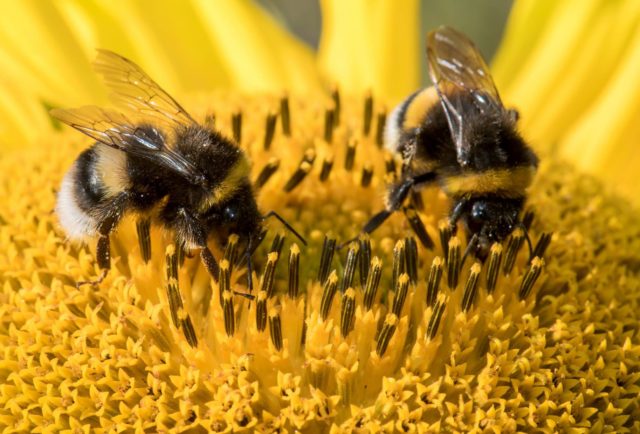
We recently interviewed Mary Goss, one of our talented beekeepers to give us an insight about what happens in the hives in the fall season.
Fall is harvest time for beekeepers. Bees have been busy making honey, so most of the hives are full with the golden nectar. On any given day, bees fly up to six miles in every direction where they can get to flowers.
At this time of the year, beekeepers are removing the excess honey, extract it and filling it into jars. Some of Mary’s honey is going to feed her family and friends. Some of it she will sell. She always gives away some of her honey in small jars to Seven Stones in return for housing her hives. We, in turn, “pay it forward” and give the honey away as small tokens of appreciation to our clients and business connections.
This year’s harvest is late, because the weather has been unusually wet. Bees can’t fly in the rain, so it sets them back with their work.
In the fall it’s also a priority to check for mites, and treat the hives if necessary. Mites can kill the bees and if the hive doesn’t have enough bees to keep it sustainable, it may even cause the collapse of the colony.
Another chore Mary will do is to set up the apiary area by adding straw bales to protect against the wind. This will happen sometime in November.
This year, Mary has been able to harvest 99 pounds of honey from three of her hives that are set up on the grounds of Seven Stones Chatfield. The outcome of the harvest changes from year to year. Last year, she was able to get 200 pounds of honey.
An interesting fact is that golden rods, and other flowers blooming this time of the year will give different flavors to the honey.
Bees themselves are changing as well this season. Workers that typically live 4-6 weeks, die off and will be replaced by hardier winter bees. Winter bees are bigger and live for months. Their primary goal is to keep the hive warm. By keeping the hive warm, they also provide heat to their queen. They contribute to the health of their hive by periodically cleaning it when temperatures rise above 50 F degrees.
Beekeepers keep records of when the queen of the hive has been established. They consider this information and other factors when they decide how much honey to harvest from the hive.
In the winter months, bee keepers leave the hives alone, except for checking on the warmest days, just to make sure things are fine with the colony.
Source: Mary Goss, local beekeeper

